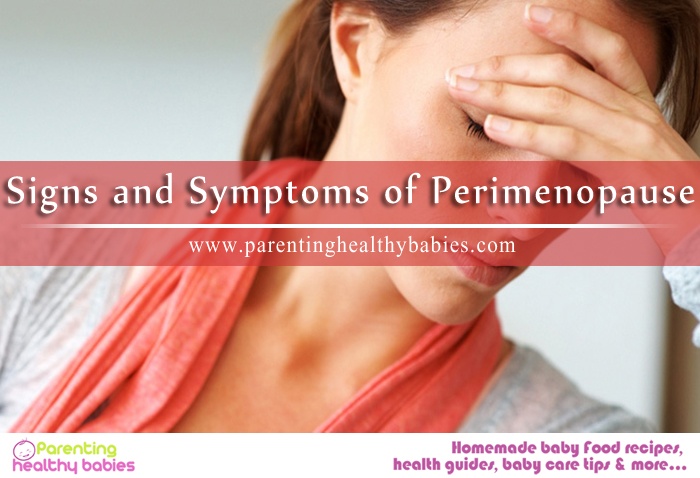Adenomyosis is a condition in which the inner lining of the uterus (the endometrium) breaks through the muscle wall of the uterus (the myometrium), also known as adenomyosis uteri. It can cause menstrual cramps, lower abdominal pressure and bloating before menstrual periods and can result in heavy periods. The condition is located throughout the entire uterus or localized in one spot. It is considered a benign (not life-threatening) condition, the frequent pain and heavy bleeding associated with it can have a negative impact on a woman’s quality of life.
Adenomyosis is a common condition and often diagnosed in middle-aged women and women who have had children. Some studies also suggest that women who have had prior uterine surgery may be risk for adenomyosis. Though the cause isn’t known, studies suggest that various hormones including estrogen, progesterone, prolactin and follicle stimulating hormone may trigger the condition.
In this article:
Symptoms of Adenomyosis in Women
Causes of Adenomyosis in Women
Risk Factors of Adenomyosis in Women
Complications of Adenomyosis in Women
Diagnosis for Adenomyosis in Women
Treatment for Adenomyosis in Women
Lifestyle and Home Remedies
Adenomyosis and Endometriosis
A Guide for Adenomyosis in Women
Symptoms of Adenomyosis in Women
While some women diagnosed with adenomyosis experience no symptoms, the disease can cause –
- Heavy and prolonged menstrual bleeding
- Severe menstrual cramps
- Abdominal pressure and bloating
- Chronic pelvic pain
- Pain during sex
- An enlarged and tender uterus
Causes of Adenomyosis in Women
The proper cause of adenomyosis is not known. Some are considered which include –
- Fetal development – it may be present before birth when the uterus first forms in a fetus.
- Invasive tissue growth – some experts say that it results from the direct invasion of endometrial cells from the lining of the uterus into the muscle that forms the uterine walls. Uterine incisions made during an operation such as in a cesarean section (C-section) might promote the direct invasion of the endometrial cells into the wall of the uterus.
- Uterine inflammation related to childbirth – it is said that adenomyosis and childbirth are linked. Inflammation of the uterine lining during the postpartum period may cause a break in the normal boundary of cells that line the uterus. Surgical procedures on the uterus can have a similar effect.
- Stem cell origins – a recent theory suggests that bone marrow cells might invade the uterine muscle causing adenomyosis.
Regardless how adenomyosis is developed, its growth depends on the circulating estrogen on women’s bodies.
Risk Factors of Adenomyosis in Women
Adenomyosis has following risk factors –
- Prior uterine surgery like C section and fibroid removal
- Childbirth
- Middle age
Most cases depends on estrogen are found in women in their 40s and 50s. Adenomyosis in these women could relate to longer exposure to estrogen compared with that of younger women. However, recent research suggests that the condition might be common in younger women.
Complications of Adenomyosis in Women
If there is often prolonged and heavy bleeding during the periods it can lead to chronic anemia which causes fatigue and other health complications.
Diagnosis for Adenomyosis in Women
Until recently, the only definitive way to diagnose adenomyosis was to perform a hysterectomy and examine the uterine tissue under a microscope. However, imaging technology has made it possible to recognize adenomyosis without surgery for the doctors. Using MRI or transvaginal ultrasound, doctors can see characteristics of the disease in the uterus.
If the doctors suspects adenomyosis, the first step is a physical examination. A pelvic examination may reveal an enlarged and tender uterus. An ultrasound can allow the doctor to see the uterus, its lining and its muscular wall. Though ultrasound cannot definitively diagnose it but can help to rule out other conditions with similar symptoms.
Another technique sometimes used to help evaluate the symptoms associated is sonohysterography.
MRI (magnetic resonance imaging) can be used to confirm a diagnosis of abnormal uterine bleeding in women.
Because of the same symptoms, sometimes it is often misdiagnosed as uterine fibroid, endometriosis and endometrial polyps. However, these conditions are not the same. fibroid are benign tumors growing in or on the uterine wall whereas adenomyosis is less of a defined mass of cells within the uterine wall. An accurate diagnosis is key in choosing the correct treatment.
Treatment for Adenomyosis in Women
Treatment of adenomyosis depends in part on the symptoms, their severity and whether the woman has completed childbearing. Mild symptoms may be treated with over-the-counter pain medications and using a heating pad to ease cramps.
- Anti-inflammatory medications – the doctor may prescribe nonsteroidal anti-inflammatory drugs (NSAIDs) to relieve mild pain associated with adenomyosis such as ibuprofen (Advil, Motrin IB, others). These are usually started one or two days before the beginning of the period and continues through the first few days of the period.
- Hormone therapy – symptoms like heavy or painful periods can be controlled with hormonal therapies such as levonorgestrel-releasing IUD (which is inserted into the uterus), aromatase inhibitors and GnRH analogs.
- Hormone medications – Combined estrogen-progestin birth control pills or hormone containing patches or vaginal rings might lessen heavy bleeding and pain. Progestin-only contraception such as intrauterine device or continuous use of birth control pills often cause amenorrhea (absence of periods) which might provide some relief.
- Hysterectomy – if the pain is severe and no other treatments have worked, the doctor might suggest surgery to remove the uterus. Removing the ovaries isn’t necessary to control adenomyosis.
Lifestyle and Home Remedies
To ease the pain and cramp, these can be done –
- Soak in a warm bath
- Use a heating pad on the abdomen
- Take an over-the-counter anti-inflammatory medication like ibuprofen
Adenomyosis and Endometriosis
These are similar but different. In adenomyosis , cells lining the uterus grow into the uterus muscle whereas in endometriosis these cells grow outside of the uterus, sometimes on the ovaries and fallopian tubes.
Conclusion
Adenomyosis is not a life-threatening condition but can cause severe discomfort. It will away after reaching menopause. It should be diagnosed and treated that can help to alleviate the symptoms.
References
https://www.webmd.com/women/guide/adenomyosis-symptoms-causes-treatments#1
https://www.mayoclinic.org/diseases-conditions/adenomyosis/symptoms-causes/syc-20369138













